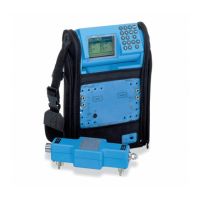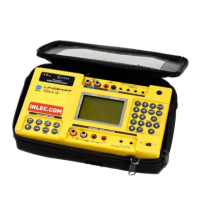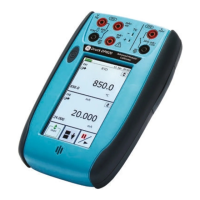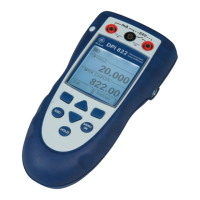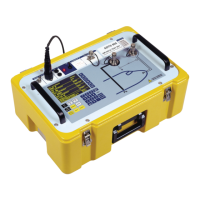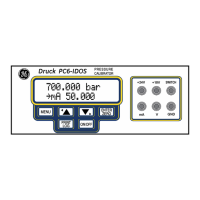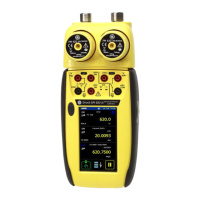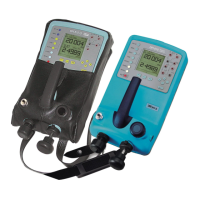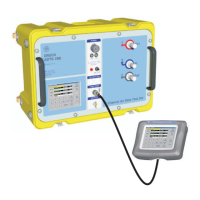7 Special functions of the DMS Go+ TC Measurement mode TopCOAT
7-12 Edition 4 (05/2014) DMS Go+
Calibration to the sound velocity
For calibrating the DMS Go+ TC, you need three cali-
bration blocks:
● the reference block at the instrument rear,
● the calibration block made of copper,
● a non-coated calibration block made of the same ma-
terial as the test object and with known thickness.
Ideally, the thickness of this calibration block is the
equal to or slightly greater than the expected read
-
ings from the test object.
At the beginning of the calibration to the sound velocity,
you have to carry out the automatic probe zero offset.
It is absolutely necessary that you use low-
viscosity couplant for the probe zero offset
(e.g. light machinery oil or glycerin).
– Apply some couplant to all three calibration blocks.
– In the function group PROBE&CAL, select the func-
tion CALIBRATION.
– Press one of the left or right arrow keys in order to
start the calibration. The message Put probe on
zero block - use couplant is displayed on the
screen.
– Couple the probe. The zeroing is started. After finish-
ing it, the message Probe zero complete. Remove
probe from zero block. is displayed on the screen.
– Uncouple the probe. The message Put probe on ref-
erence block - use couplant is displayed on the
screen.
– Center the probe above the reference block and turn
it so that the flat side is parallel to the groove cut in
the reference block.
– Couple the probe to the center of the reference block
and keep it steady. After finishing it, the message
TopCOAT zero completed. Remove probe from
reference block. is displayed on the screen.
– Uncouple the probe. The message Couple to Cal
standard (displayed below) or press ENTER to
change cal. block thickness. is displayed on the
screen.
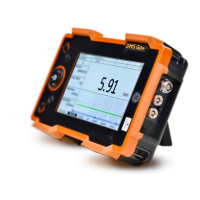
